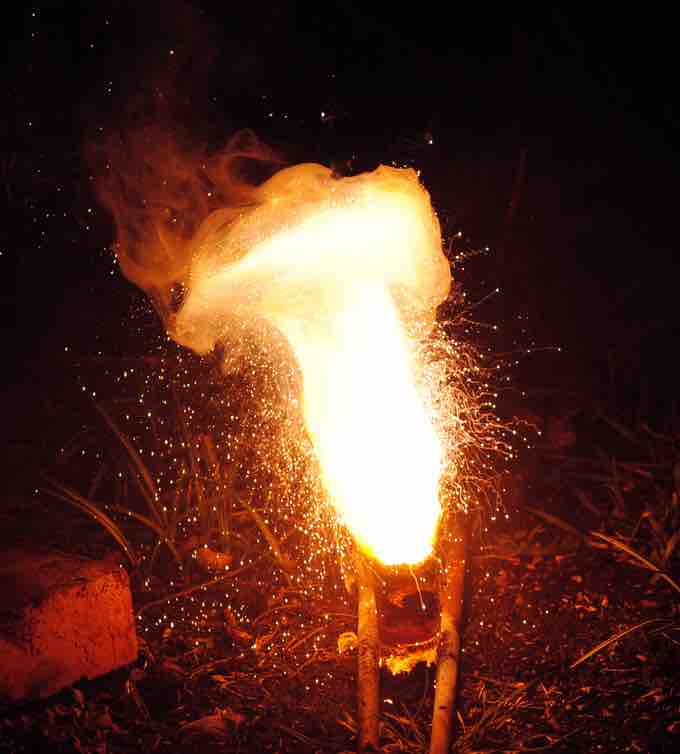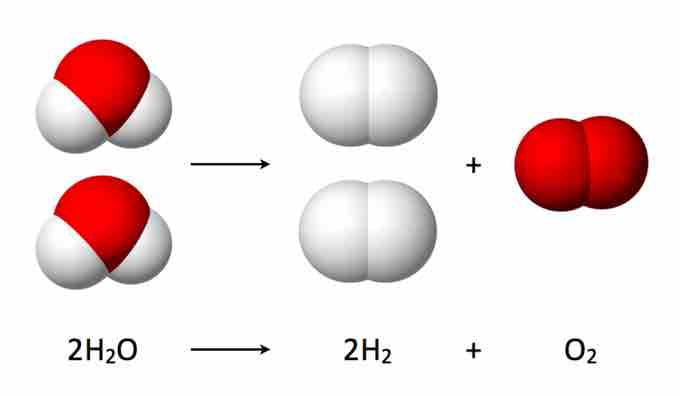Due to the absorption of energy when chemical bonds are broken, and the release of energy when chemical bonds are formed, chemical reactions almost always involve a change in energy between products and reactants. By the Law of Conservation of Energy, however, we know that the total energy of a system must remain unchanged, and that oftentimes a chemical reaction will absorb or release energy in the form of heat, light, or both. The energy change in a chemical reaction is due to the difference in the amounts of stored chemical energy between the products and the reactants. This stored chemical energy, or heat content, of the system is known as its enthalpy.
Exothermic Reactions
Exothermic reactions release heat and light into their surroundings. For example, combustion reactions are usually exothermic. In exothermic reactions, the products have less enthalpy than the reactants, and as a result, an exothermic reaction is said to have a negative enthalpy of reaction. This means that the energy required to break the bonds in the reactants is less than the energy released when new bonds form in the products. Excess energy from the reaction is released as heat and light.

Chemical reaction
A thermite reaction, which produces molten iron.
Endothermic Reactions
Endothermic reactions, on the other hand, absorb heat and/or light from their surroundings. For example, decomposition reactions are usually endothermic. In endothermic reactions, the products have more enthalpy than the reactants. Thus, an endothermic reaction is said to have a positive enthalpy of reaction. This means that the energy required to break the bonds in the reactants is more than the energy released when new bonds form in the products; in other words, the reaction requires energy to proceed.

The decomposition of water into hydrogen and oxygen
When water is heated to over 2000 degrees Celsius, a small fraction will decompose into hydrogen and oxygen. Significant heat energy is needed for this reaction to proceed, so the reaction is endothermic.